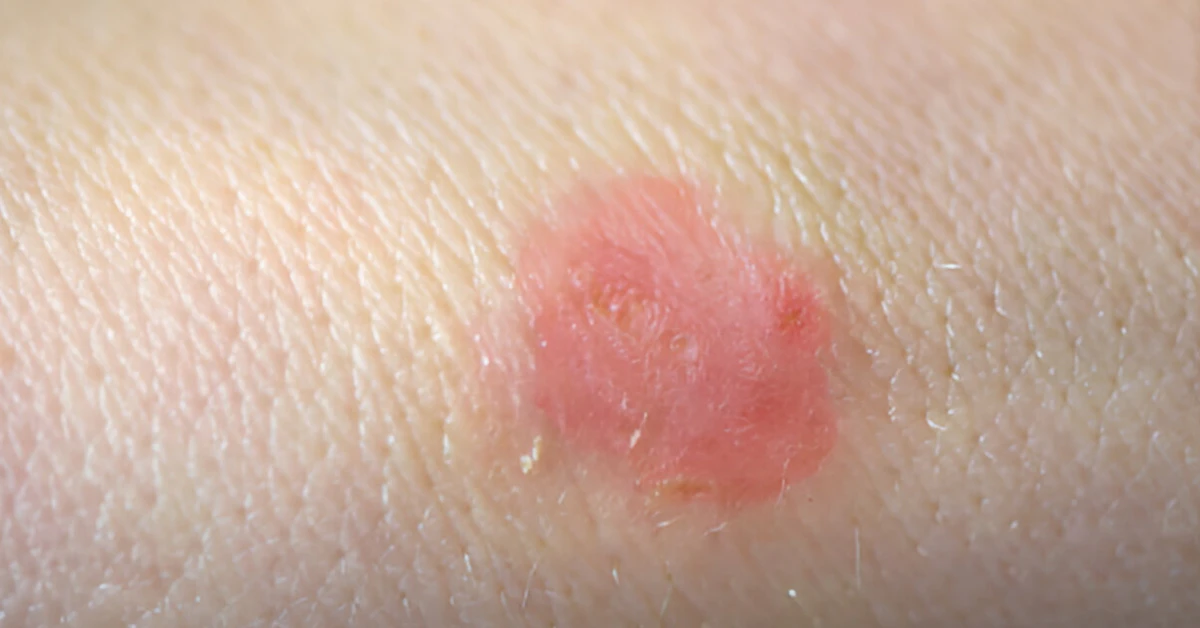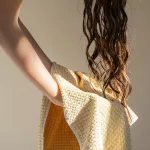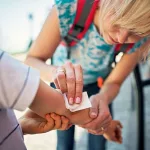You saw it first in the shower. A weird red ring on your arm. Maybe your leg. Or worse—on your kid’s face.
You scratched it. Now it itches more. Spreads a little.
Yeah. It’s ringworm.
But here’s the thing: just because it shows up fast doesn’t mean it clears fast. And healing? It’s not as simple as slapping on some cream and calling it a day.
I get it. You’re tired of the itch. Tired of worrying if it’s contagious. Tired of wondering, “Is it getting better—or worse?”
Let’s talk about the real ringworm stages of healing. Not the rushed version from ads promising a “3 day ringworm treatment cream.” But the actual, honest process—what it looks like, how long it takes, and when you can finally breathe easy.
No jargon. No scare tactics. Just real talk—because you deserve to know what’s really happening under that rash.
It’s Not a Worm
I know, I know. The name “ringworm” makes zero sense. Feels like a bait-and-switch, right?
But here’s the truth: ringworm isn’t a worm at all. Not even close.
What is ringworm, then? It’s a fungal infection—specifically, a type called tinea corporis. The fungi behind it? Dermatophytes. They love warm, damp skin and feed on keratin—the stuff in your skin, hair, and nails.
Think of them like tiny molds, quietly spreading across your surface. Gross? Maybe. But way more common than you think.
It shows up as red, scaly patches—often in a ring shape (hence the misleading name). But not always. Sometimes it’s blotchy. Sometimes it’s barely noticeable. And sometimes? It’s mistaken for something else entirely.
And that’s where things get messy.
Looks Like, But Isn’t

Not every red, itchy circle is ringworm. Some rashes that look like ringworm but aren’t include nummular eczema, pityriasis rosea, or even psoriasis.
One of the trickiest mix-ups? Ringworm vs eczema.
They both flake. Both itch. Both come and go.
But eczema tends to be more chronic, with dry, cracked skin in folds or joints. Ringworm usually has a clearer center and a raised, defined border. Oh—and it’s contagious. Eczema isn’t.
Bottom line? If you’re guessing, you might be treating the wrong thing. That’s why seeing a doctor for a skin scraping or Wood’s lamp exam can save you weeks of frustration.
Healing Starts Here
Now, let’s walk through the actual ringworm stages of healing. This isn’t a one-size-fits-all timeline—your skin, your treatment, and your body all play a part. But generally? It goes like this.
Stage 1: The Rash Shows Up (No Joy)
First sign: a red, scaly patch. Maybe it burns. Definitely it itches.
This is active infection. The fungus is spreading outward from the center, creating that classic ring shape. The edges are raised, red, and flaky. The middle? Might look clearer, already healing as the fungus moves.
This stage usually kicks in 1 to 2 weeks after exposure—maybe from your gym mat, a pet, or even dirty towels.
And yes—this is highly contagious. Fungal spores can live on sheets, clothes, and furniture for months.
So if you’ve got this? Wash everything. And keep it away from others—especially kids and pets.
Stage 2: First Signs of Better (But Don’t Celebrate Yet)
You start using antifungal cream. After a few days, the itch fades. Redness softens. Maybe the edges aren’t as angry.
This is progress. But not victory.
Most people quit here. “Looks better,” they think. “I’m done.”
Big mistake.
The fungus is still alive below the surface. Stop treatment now, and it’ll bounce back—stronger, itchier, and harder to kill.
This is where patience matters. Healing takes time—usually 2 to 4 weeks of consistent treatment, even if the rash seems gone.
And remember: apply the cream beyond the edge of the rash. Not just on it. That’s how you stop spread.
Stage 3: Real Healing (Finally)
True recovery looks like this: no more itching. No flaking. Skin color returns to normal. The border? Fully blended. No trace of the ring.
This is healing. Actual healing.
For mild cases (like on arms or legs), you’ll likely see this in a few weeks. But tougher spots—like ringworm on face or ringworm foot (athlete’s foot)—can take longer.
And if it’s on your scalp? That’s a whole other ball game.
Treatment That Works
Let’s talk about what actually helps—and what doesn’t.
No, There’s No 3-Day Cure
I wish there was.
But here’s the real talk: there is no such thing as a “3 day ringworm treatment cream” that actually eradicates the fungus.
Any brand claiming that? They’re selling hope, not medicine.
Even strong antifungals take time. The fungus has roots—metaphorically—in your skin. You need consistency, not speed.
Stick with a proven OTC option like:
- Terbinafine (Lamisil AT)
- Clotrimazole (Lotrimin)
- Miconazole (Micatin)
Use it twice a day, every day, for at least 2–4 weeks. Even after it looks gone.
What If Creams Aren’t Enough?
Sometimes, OTC isn’t enough—especially if you’re dealing with ringworm head (tinea capitis) or ringworm on face.
Scalp infections often need oral medication. Why? Because topical creams can’t reach deep into hair follicles where the fungus hides.
In those cases, doctors might prescribe:
- Griseofulvin
- Oral terbinafine
- Ketoconazole shampoo (used alongside pills)
A study from the American Academy of Dermatology notes that scalp ringworm almost always requires systemic treatment—and early action helps prevent hair loss or scarring.
How Long Does It Take?
I know you want a simple answer. But healing time depends on a few things:
- Where it is
- How bad it is
- What treatment you use
- How consistently you use it
Here’s a rough timeline:
| Location | Average Healing Time | Notes |
|---|---|---|
| Arms, torso (tinea corporis) | 2–4 weeks | OTC creams usually work |
| Feet (ringworm foot / athlete’s foot) | 4+ weeks | Hard to keep dry—slower healing |
| Face (ringworm on face) | 3–4 weeks | Use gentle antifungals; avoid steroids |
| Scalp (ringworm head) | 6–8 weeks | Oral meds required |
Yes, feet and scalp take longer. And yes, it’s annoying.
But cutting corners? That’s how you end up with a recurring rash—and frustrated skin.
Habits That Help
Medication is the main player. But your habits are the supporting cast.
Keep It Dry
Fungus loves moisture. So do everything you can to keep the area dry.
After showering, pat—not rub—your skin. Wear breathable cotton clothes. Change socks daily. If it’s on your foot, let your feet air out at home.
Simple? Yes. Crucial? Absolutely.
Wash Everything
Sheets, towels, clothes—wash them every day in hot water with detergent.
Spores survive on fabric. If you sleep on the same sheets for days? You’re basically reinfecting yourself every night.
And yes, it’s a pain. But it’s faster than dealing with a comeback rash.
Some people add a half-cup of bleach or borax to the wash—both kill fungal spores. Just follow label directions.
Disinfect Surfaces
Fungal spores don’t die easily. They can live on couches, floors, and combs for months.
Wipe down shared surfaces with a disinfectant that kills mold and fungus. And don’t share towels, hats, or gym gear until you’re fully clear.
When to See a Doctor
You’ve been faithful with cream. Two weeks pass. But no improvement?
Time to call a dermatologist.
You should also see a doctor if:
- The rash spreads or blisters
- It’s on your scalp, face, or groin
- You have diabetes or a weakened immune system
- It keeps coming back
According to Piction Health research, early medical intervention cuts the risk of complications and re-infection significantly.
It’s Not Just Skin Deep
Let’s be real: ringworm can mess with your confidence.
Especially if it’s on your face. Or if your kid has it. You worry about looks. About spreading it. About being “dirty.”
But here’s the truth: ringworm doesn’t mean poor hygiene. It means you were exposed. And it happens to millions every year.
You’re not alone. You’re not gross. You’re just human.
And the good news? It’s treatable. Every single time.
Real Healing Takes Time
There’s no magic fix. No “3-day” miracle.
Healing comes from consistency. From showing up every day with your cream, your clean sheets, your patience.
But if you stick with it? You will get there.
The itch fades. The ring disappears. Your skin breathes again.
And one day, you’ll look in the mirror and realize: it’s gone. Really gone.
You did it.
If you’re still in the thick of it—hang in there. Healing isn’t a sprint. It’s a steady walk.
And if you ever feel lost? Reach out. Ask questions. Talk to a doctor. You’ve got this.
What are you doing differently this time? Have you tried a certain cream or routine that’s working?
Drop your thoughts below. Let’s help each other get clear—for good.


















Leave a Reply
You must be logged in to post a comment.